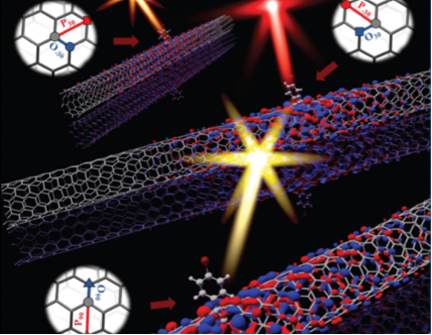Shining light on functionalized carbon nanotube emission
Contact
- Brendan Gifford

Spatial extent of the electron-hole pairs (excitons) around the defect site in functionalized carbon nanotubes. Three defect configurations are synthetically possible. The topological position of defects defines emission characteristics. (Image courtesy of Journal of Physical Chemistry C)
Through a close collaboration between experimentalists and theorists in the Center for Nonlinear Studies (CNLS) and Center for Integrated Nanotechnology (CINT), researchers have unearthed the origin of diverse emission features in single-walled carbon nanotubes (SWCNTs) with functional groups bonded to the sidewalls. Absorption of a photon in such system generates an electron-hole pair (exciton) on the unmodified portion of the SWCNT. The exciton then moves to the defect site, from which emission occurs. Since the defect site forms a quantum well and lowers the energy of the exciton, emission energies are significantly lower than absorption and can be manipulated by controlling the geometry of the defect.





